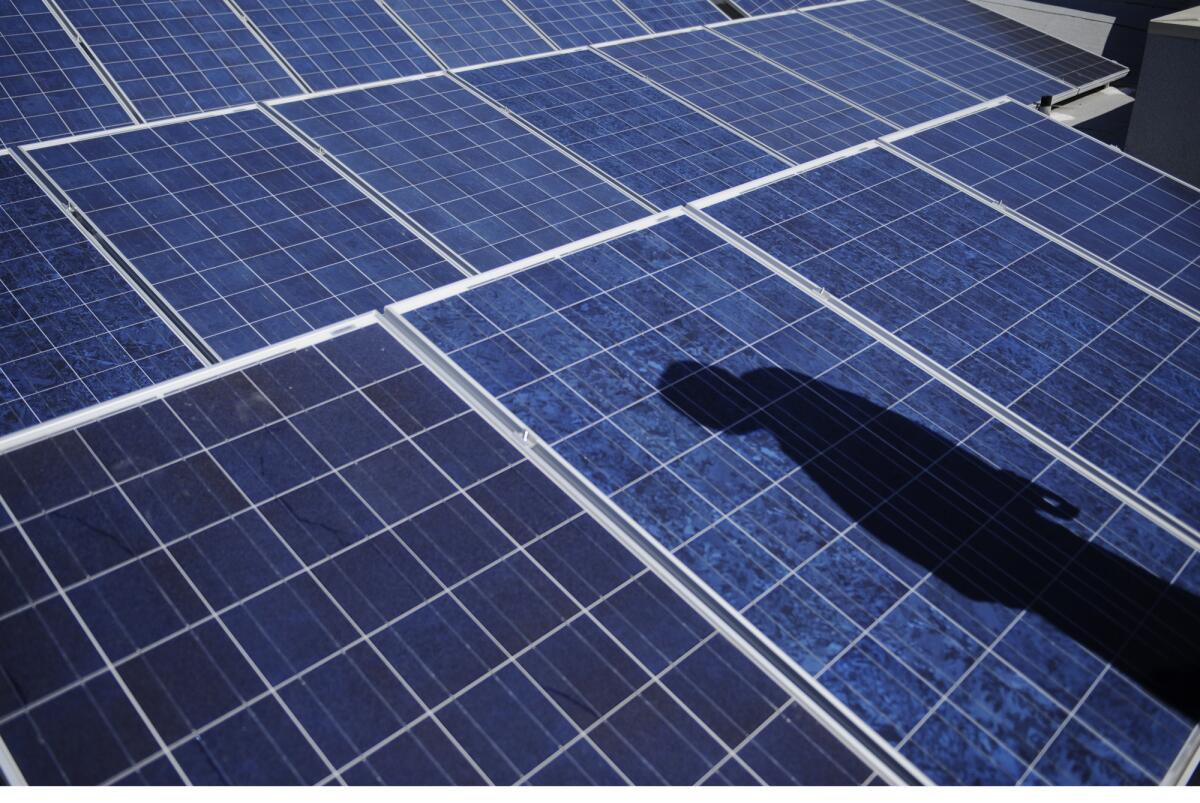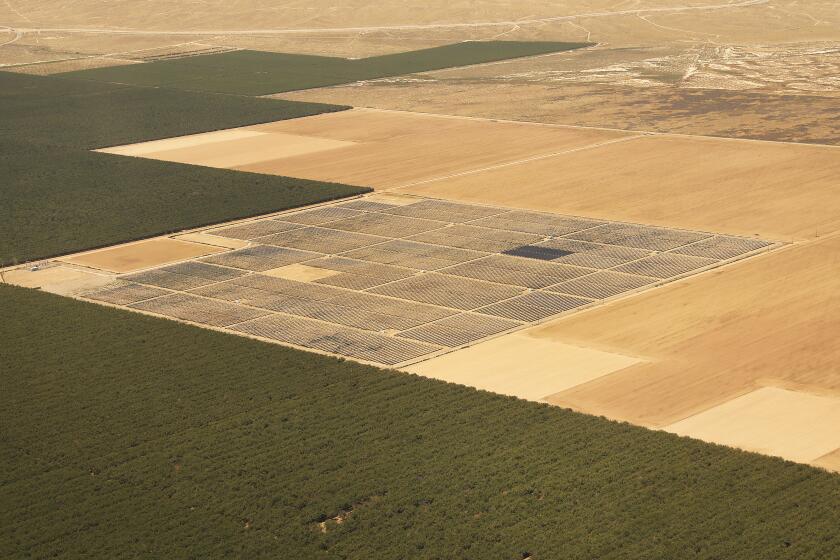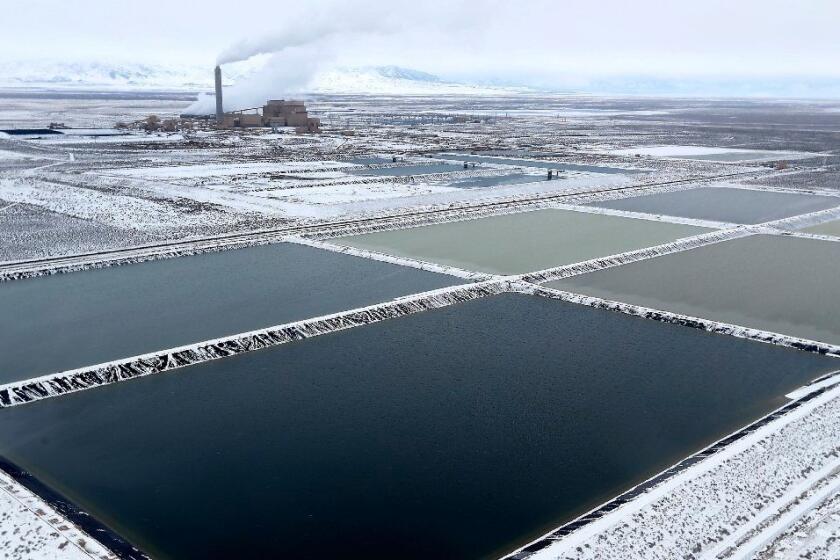The most profitable part of solar power isn’t panels or batteries

- Share via
The most profitable corner of the booming U.S. solar industry isn’t making — or even installing — panels. It’s building the components that keep electricity flowing to the power grid.
They’re called inverters, and the two companies that make the vast majority of premium ones in the United States reported their highest revenue ever in the second quarter, propelling their shares to record levels. Enphase Energy Inc. has gone from trading at less than $1 a share in 2017 to ranking among the world’s most valuable solar stocks with a market capitalization of $3.8 billion. Its slightly larger rival, SolarEdge Technologies Inc., has rallied 130% this year.
The systems Enphase and SolarEdge supply are crucial to making solar power work. Panels produce direct-current electricity that needs to be converted to alternating current so it can be carried into homes or sent to local power grids. That’s what inverters do. The ones Enphase and SolarEdge make are so specialized and cost-effective to manufacture that the companies have bigger profit margins than most other segments of the solar business.
“They’re better than anything in the industry,” said Jeffrey Osborne, an alternative energy analyst at Cowen & Co. “There’s nothing out there that I’ve seen that can compete” in terms of profitability.
On Tuesday, Israel-based SolarEdge reported its second-quarter results — record revenue of $325 million and profit that beat analyst’s estimates — and its shares jumped 25%. Last week, Fremont, Calif.-based Enphase posted $134 million in revenue, up 77% from a year earlier, and said third-quarter sales may total as much as $180 million.
The two companies supplied 89% of the total U.S. market for module-level inverters last year, according to Wood Mackenzie Power & Renewables analyst Lindsay Cherry. They’ve kept their edge in the United States even as China’s Huawei Technologies Co. and Sungrow Power Supply Co. dominate the global market. That’s in part because Huawei canceled plans this year to enter the U.S. market after lawmakers suggested a ban on its technology.
Clean energy projects in the Central Valley could help California hit its climate change goals.
SolarEdge and Enphase each gave earnings projections that beat analysts’ estimates as demand for solar rebounds. Wood Mackenzie Power & Renewables and the Solar Energy Industries Assn. projected that photovoltaic capacity installations in the United States would rise 14% in 2019 after a two-year slowdown. A global index of solar stocks maintained by Bloomberg has surged almost 30% this year after declining in four of the previous five years.
Inverters represent just a fraction of the total cost of a rooftop solar system. For a typical $15,000 panel installation, an inverter may cost about $1,500. But they’ve proved to be the source of many breakdowns, and buyers have grown comfortable with the quality of Enphase and SolarEdge products, Osborne said.
The type of “smart” inverters that Enphase and SolarEdge make has also given the companies a leg up. These components isolate issues on an individual panel so they don’t affect the output of an entire system. And they can be easier to integrate with batteries, an attractive proposition for installers trying to sell solar-plus-battery combinations.
The biggest threat facing the two manufacturers may be each other. “Investors have been fiercely debating whether Enphase is taking or will take market share from SolarEdge in the U.S.,” Philip Shen, an analyst at Roth Capital Partners, said in a research note. “We believe the global growth of distributed solar is big enough for both.”
Los Angeles hopes to store solar and wind power in underground salt caverns, to help replace a giant coal plant.
More to Read
Inside the business of entertainment
The Wide Shot brings you news, analysis and insights on everything from streaming wars to production — and what it all means for the future.
You may occasionally receive promotional content from the Los Angeles Times.










